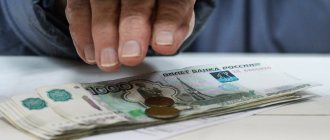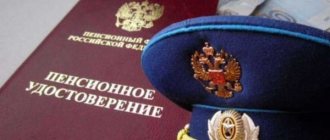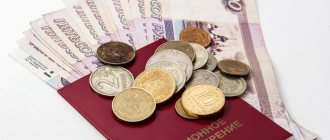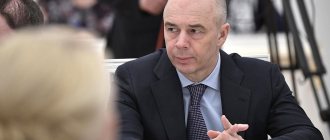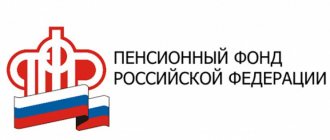Coronavirus has been spreading in Russia for almost 7 months now. In the fall, the number of cases increased again. For example, on September 28, more than 8,000 infected people were identified. Closer to August, the indicator dropped to 4600 and remained this way for several days. Subsequently, it was not possible to maintain such numbers, and the number of cases again began to grow slightly (at that time).
As a result, people think that the government will now reintroduce a strict lockdown. In addition, citizens are interested in whether there will be financial support for citizens with children. Since this is a very important question that worries millions of people, it must be answered. Let's figure it out, because this is really necessary.
Details of changes in the procedure for calculating pension payments in the Russian Federation
Initially, officials planned to make a massive transition to Mir cards in mid-summer. The plans were hindered by a long quarantine due to the coronavirus. Due to the fact that some bank branches were temporarily closed, and others accepted clients only according to a strictly shortened schedule, the authorities realized that not everyone would be able to cope with the goal set by the state. As part of the sanitary safety protocol, citizens were allowed to deal with the issue of reissuing cards until October 1.
Those pensioners who had just started receiving benefits through a transfer through the banking system automatically received an offer to immediately issue the necessary cards.
The approach with a smooth transition and proposals to those who have just gone on a well-deserved vacation made it possible not to cause mass panic among the population, because a significant number of pensioners are already successfully using the benefits of the Mir service system. The Pension Fund reminded that not only pensioners, but also all recipients of social benefits from the state should have such cards.
Due to the economic consequences of the coronavirus, more and more Russians are expressing a desire to have the status of a low-income family. If such a family is raising a child from 3 to 7 years old, then the state will allocate money for his needs for a whole year just on the principle of a bank transfer. In this case, parents also need to obtain the appropriate card.
Stopping payments and banning hookahs. What will change for Voronezh residents from October 1
The incidence of coronavirus is again gaining momentum, but the pandemic has not stopped life in Russia. In October, new laws or amendments to old ones come into force. They will affect many people - state employees, military personnel, insurance recipients, motorists and more. But some support measures that were introduced due to COVID will no longer apply.
Vesti Voronezh has collected the main innovations that will change the lives of Russians in the coming month.
Salary growth
From October 1, employees of budgetary organizations will increase their wages by 3%, Rossiyskaya Gazeta reports. Salaries for employees of federal government, budgetary and autonomous institutions will increase. Indexation will also affect employees of federal government bodies and civil servants of military units, institutions and divisions of federal executive authorities that provide for military service.
The incomes of employees of the Ministry of Internal Affairs, the Ministry of Emergency Situations, the FSB, the Foreign Intelligence Service, the Federal Security Service, the Russian Guard, the Investigative Committee and the Prosecutor General's Office will increase.
Ban on hookahs
From October 30, a ban will be introduced on the consumption of nicotine-containing products and the use of hookahs in cafes and restaurants. At the same time, the law does not prohibit the activities of hookah bars - the use of hookahs in public catering is unacceptable. Experts note that the ban on hookahs is especially relevant amid the spread of coronavirus.
OSAGO with technical inspection
From October 1, to apply for an MTPL policy, you will again need to present a valid diagnostic card. During the pandemic, from March 1 to September 30, drivers were exempt from this - when purchasing a “citizen car” they only had to indicate when they planned to undergo maintenance. If a motorist takes out a policy, but does not perform a technical inspection, then the insurer in the event of an accident receives the right to recover the money paid from him in full.
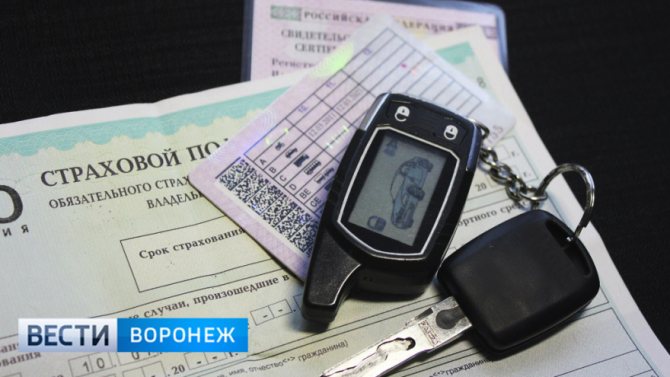
Payments for children
From October 2, it is necessary to submit an application to receive monthly payments for children under three years of age - they are provided if the average per capita family income does not exceed two subsistence minimums. Applications can be submitted through your personal account at State Services, as well as through the Pension Fund or branches of the MFC. Those who do not have time to submit an application will not be given money.
Previously, benefits were extended automatically. In total, since April, more than 77 thousand Voronezh families have received payments for children under three years old, and 262 thousand families for children from 3 to 16 years old.
Unemployment benefits
From October 1, the period of payment of benefits for individual entrepreneurs who closed their business after March 1 will end. They could receive benefits at the level of the minimum wage (12,130 rubles). But if an individual entrepreneur closed his business shortly before October 1, he has the right to claim increased payments for another three months.
In addition, the maximum benefit amount will no longer be paid to those who have insufficient work experience or low earnings at their previous place of work. Before this, everyone paid it.
Loans at 0%
From October 1, the deadline expires when legal entities or individual entrepreneurs could enter into an agreement with banks to obtain a loan at 0% per annum to pay salaries to employees, Rossiyskaya Gazeta reported.
Payments to "Mir"
From October 1, all social payments, including pensions, will be transferred only to the Mir card. And those who use cards from other systems, such as Visa or Mastercard, need to transfer payments to cards of the national payment system.
In addition to pensions, only Mir will receive maternity benefits, a one-time benefit for the birth of a child, a monthly care allowance, as well as a monthly cash payment for a child aged three to seven years.
But for those pensioners whose payments are credited to their deposit account or delivered to the post office, nothing will change, TASS explained.

Deposit insurance
From October 1, the maximum amount of insurance compensation for deposits will be increased to 10 million rubles. True, this will not affect everyone. It will be possible to return the amount if the bank loses its license upon receipt of an inheritance or grant, sale of an apartment, compensation for damage caused to life, health or property.
"Transparent" charity
The legislation includes a definition of a donation box, as well as rules for its use. Starting October 5, a non-profit organization is required to indicate its name, address, website, if it has one, and announce the purpose of the collection by placing this information on the box. Portable donation boxes are only allowed to be used where a non-profit organization is currently holding a public or other event, Gazeta.Ru reported.
Also, the NPO will have to publish a report - how much money was collected and what it was spent on.
Updated procedure for receiving pensions on the card
Pension consultants remind that the innovation does not apply to those recipients who collect money owed from the state themselves at post offices or bank branches. This also includes situations when a postman brings a pension to your home. In such cases, everything remains unchanged.
The reason for the desire of domestic officials to transfer socially vulnerable segments of the population to services through the Mir system lies, according to analysts, in security issues.
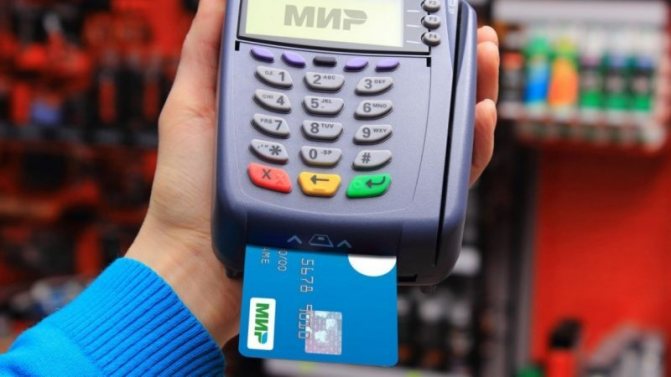
The authorities do not rule out that the international community will once again announce a new package of sanctions, which will include blocking services for cards of international payment systems. To prevent a collapse in the social sphere, Russians are being transferred to the domestic payment system in advance. This will not allow citizens to be left without the ability to cash out or pay for goods in stores.
Putin increased payments to families with children from 3 to 7 years old
Vladimir Putin, the Russian President, demanded that a way be found to increase the amount of payments to parents who have children aged 3-7 years.
At a meeting with senators, the Russian leader raised the issue of the budget for next year. When working with the document, you need to understand and justify how to increase “children’s” payments. The criteria must be fair and clear. We are talking about families whose monthly income does not reach the regional minimum wage.
Vladimir Putin clarified: today the average payment in the country is 5,500 rubles. The senators agreed with the president that there is an urgent need to increase this amount.
Earlier, the head of the Accounts Chamber, Alexei Kudrin, said that the Russian government has money in the budget to financially support citizens if necessary. However, the funds will need to be distributed correctly.
The need to periodically carry out operations with a pension on the card
All those recipients of social benefits who have already changed their cards must notify the pension service about the new number. Otherwise, the accrual of pensions using new details simply will not happen, since information from the bank is not automatically transferred to the Pension Fund.
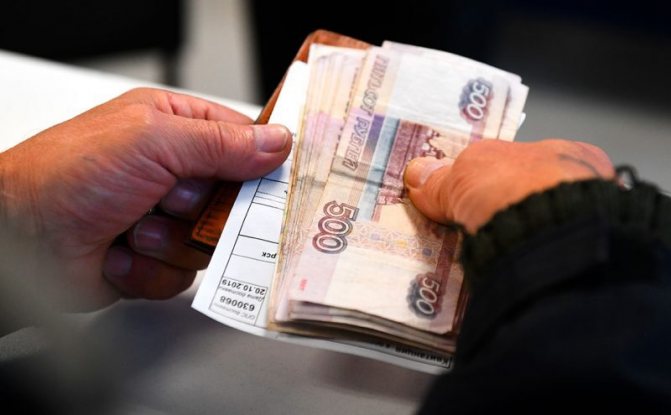
Pensioners were advised to withdraw money from their cards at least on a periodic basis. The reason lies in the fact that after six months of no movement on the account, the data can be taken into account by the regulatory authorities. The reason is the high probability that the citizen emigrated or died, and the relatives never reported this.
Source
Are payments of 10,000 rubles planned in October?
The authorities have not yet officially said anything about a full quarantine. Accordingly, there were no statements about payments. Conclusion: they will not pay 10,000 rubles. Of course, unless restrictions are introduced. Therefore, you need to carefully follow the news. If this happens, it will be enough to fill out an application.
We remind you: financial support for Russians was provided by the authorities twice in the summer months. After that it was no longer needed.

Indexation of pensions - latest news
In 2020, the social pension will increase.
Additional payments will look like this: Amount of monthly social pension payment
| Recipient category | Sum |
| WWII disabled person who became disabled | 5403,22 |
| WWII participant | 4052,4 |
| persons awarded the badge “Resident of besieged Leningrad” | 2972,82 |
| WWII participants who were not part of the active army | 1622 |
| parents and wives of military personnel who died as a result of shell shock or injury during the defense of the USSR | 4052,4 |
Amount of social disability pension
| Category of citizens | Sum |
| 1 group | 11212,36 |
| 2nd group | 5606,15 |
| 3 group | 4765,27 |
| disabled people from childhood, group 1 and disabled children | 13454,64 |
| disabled since childhood, 2 groups | 11212,36 |
Single cash payment
| Category of citizens | Sum |
| 1 group | 3896,43 |
| 2nd group | 2782,97 |
| 3 group | 2227,55 |
| disabled people from childhood, group 1 and disabled children | 3782,94 |
| disabled since childhood, 2 groups | 2782,67 |
On average, pensions will increase by:
Increase in pensions
| Category of citizens | Sum |
| 1 group | 644,63 |
| 2nd group | 322,31 |
| 3 group | 273,97 |
| disabled people from childhood, group 1 and disabled children | 773,55 |
| disabled since childhood, 2 groups | 644,63 |
The President of the Russian Federation approved the budget of the Pension Fund for 2020 and for the planning period 2020 and 2020.
07 December 2020 11:52
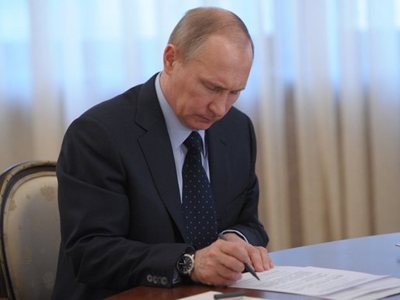
In accordance with the budget, in 2020, the Pension Fund's expenses for pension provision for Russians will increase by 279 billion rubles and amount to 7.15 trillion rubles. Expenditures on social benefits will increase by 11.8 billion rubles and amount to 981 billion rubles.
The PFR budget provides for an increase in insurance pensions, taking into account a temporary change in the procedure for indexing insurance pensions. Indexation of state pensions, including social pensions, will be carried out in accordance with the current pension legislation, taking into account the growth index of the pensioner’s cost of living for 2020.
Thus, insurance pensions, including a fixed payment, for non-working pensioners will be increased by 3.7% from January 1, 2020, which is higher than the forecast inflation rate. The size of the fixed payment after indexation will be 4,982.9 rubles per month, the cost of the pension point will be 81.49 rubles (in 2020 – 78.58 rubles). The average annual old-age insurance pension will increase to 14,075 rubles (161.3% of the pensioner’s subsistence level).
State pension benefits, including social ones, will be increased from April 1, 2020 for working and non-working pensioners.
As before, in 2020 there will be no pensioners in Russia with a monthly income below the pensioner’s subsistence level (PLS) in their region of residence. All non-working pensioners will receive a social supplement to their pension up to the PMP level. In the context of a possible reduction in the PMP in the region, it is envisaged that the total amount of material support for non-working recipients of the federal social supplement will be maintained at a level not lower than December 31, 2017. For these purposes, the PFR budget has allocated 94.5 billion rubles.
In accordance with the draft budget, 14.7 billion rubles are planned to be used to pay out pension savings in the form of a funded pension, urgent and one-time payments.
From February 1, 2020, the size of the monthly cash payment (MCB) received by federal beneficiaries will be indexed to the forecast inflation rate in 2020 - 3.2%. The Pension Fund will allocate 450.6 billion rubles to pay the EDV.
Russians caring for disabled citizens will continue to receive compensation payments in the amount of 1.2 thousand rubles per month, while the Pension Fund makes monthly payments in the amount of 5.5 thousand rubles to non-working parents of disabled children and people with disabilities since childhood. Expenses for these payments in 2018 are planned at 73.2 billion rubles.
In 2020, the Pension Fund will continue issuing state certificates for maternity capital, as well as paying out its funds. In this area, the PFR budget allocates 341.4 billion rubles. The size of maternity capital next year will not change and will be 453,026 rubles.
The Pension Fund budget for 2020 is balanced in terms of income and expenses; in the part not related to the formation of pension savings, the income and expenses of the Pension Fund of the Russian Federation are planned in the amount of 8,236 billion rubles. In terms of the formation of pension savings, budget expenses exceed income by 106.6 billion rubles, which is explained by the transfer of pension savings to non-state pension funds in accordance with the choice of the insured person. Covering these funds will be ensured through pension savings transferred (including return) to state and private management companies, the size of which is estimated as of January 1, 2020 at 1,111.2 billion rubles.
The total budget revenues of the Pension Fund in 2020 are planned at 8,333.3 billion rubles, which is 8.6% of the GDP of the Russian Federation. In terms of expenses, the PFR budget is formed in the amount of 8,439.9 billion rubles, which is 8.7% of the GDP of the Russian Federation.
The main type of pension in Russia in 2020 will continue to be an insurance pension. The number of its recipients will be more than 40 million people. Almost 3.7 million more people are recipients of state pensions.
In 2020, the Pension Fund of the Russian Federation will continue to provide subsidies to constituent entities of the Russian Federation for the implementation of social programs in terms of construction, reconstruction and repair of social institutions for older citizens and people with disabilities, development of their material and technical base, as well as for training pensioners in computer literacy. The Pension Fund allocates subsidies on the basis of co-financing the costs of implementing social programs by constituent entities of the Russian Federation. The amount provided for these purposes in the PFR budget for 2018 increased from 1 billion to 2 billion rubles.
All fund bodies
The structure of the Pension Fund operating in 2020 includes the following bodies:
| Name of the PFR body | What does he do? | Additional Information |
| Governing body | Manages the Foundation. Pursues a unified strategy for managing the Russian pension system in accordance with the law. Determines the future and current objectives of the Foundation. Issues regulations on issues of pension and social security, as well as the activities of the Pension Fund of the Russian Federation within its competence. | According to the structure of the Pension Fund of the Russian Federation, there is one for the entire Pension Fund. Located in Moscow. |
| Executive Directorate | This is the executive body of the Pension Fund, which is responsible for:
| Based on the structure of the Pension Fund of the Russian Federation, there is only one. Located in Moscow. |
| Branches | Organize pension and social security in all regions of Russia in accordance with the legislation, decisions of the Pension Fund Board and the Executive Directorate. The Fund's subordinate territorial bodies lead, control and finance. | For 2020, according to the organizational structure of the Pension Fund, there are 84 of them |
| Management and customer services | Provide Pension Fund services to participants of the compulsory pension insurance system - citizens and organizations | There are about 2460 of them. Due to the current structure of the Russian Pension Fund, they operate in all regions under the leadership of PFR branches. |
| Audit committee | Departmental financial control in the Pension Fund system. Evaluates the reliability of financial controls. Prepares proposals to improve the efficiency of financial control. Confirms the accuracy of budget reporting. Prepares proposals to improve the efficiency and effectiveness of the use of PFR budget funds. | According to the structure of the Pension Fund bodies, he is on the Board |
| Interregional Information Center | Processes information about the pension rights of citizens in the compulsory pension insurance system, protects and securely stores data. Provides automation of the Pension Fund information system, maintains its databases and registers of citizens entitled to receive state social assistance. | Taking into account the structure of the PFR bodies, it is part of the Executive Directorate. Located in Moscow. |
| Pension payment and information processing centers | Remotely ensure payment of pensions and social benefits. Process documentation from Pension Fund departments on the assignment and payment of pensions. Control the delivery of pension and social payments to recipients. | The peculiarity of the PFR organizational structure is that these centers are not located in every region of Russia, but only in 25. |
Note that the structure of the Pension Fund of the Russian Federation is constantly being improved.
Thus, in 2020, 274 directorates and departments of the Pension Fund of Russia in 44 regions of the Russian Federation were reorganized into 141 inter-district directorates. As a result, the structure of the Pension Fund of the Russian Federation in 2020 includes 2.46 thousand units that daily ensure the operation of the country’s pension system at the federal and regional levels.
What's new in pension payments
On January 1, the insurance portion of the pension received by non-working pensioners was increased. Also in 2020, pensions are expected to increase for the working part of the population and those who receive insurance payments.
On January 1, 2020, indexation was 6.6%. Thanks to this increase, the national average pension increased by 1,000 rubles. The average annual pension is at the level of 16.4 thousand rubles.
In each case, the size of the future increase depends on how large the pension is. The greater the length of service, the number of pension coefficients, earnings and contributions to insurance, the higher the pension will be. To make it easier to calculate how much larger your pension will be, you can simply multiply it by 0.066.
Please note that from October 1, 2020, pension payments are made only to cards of the MIR payment system.
